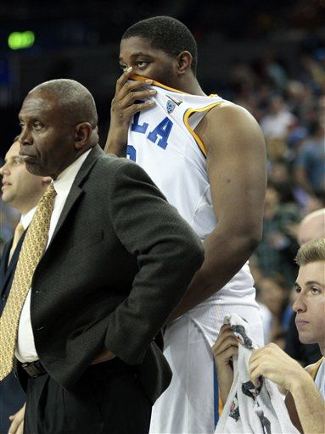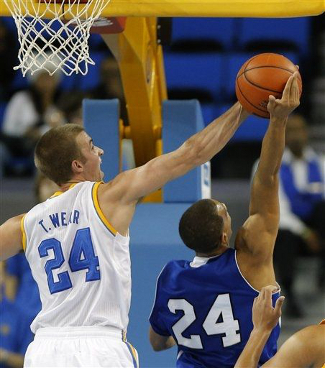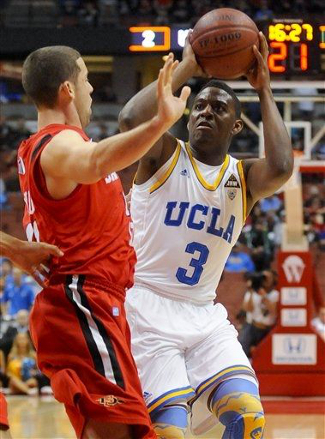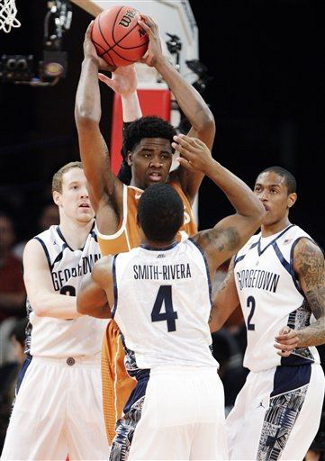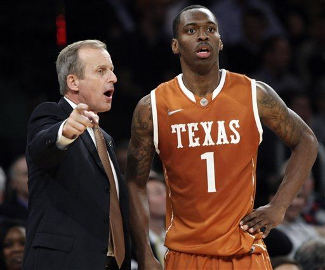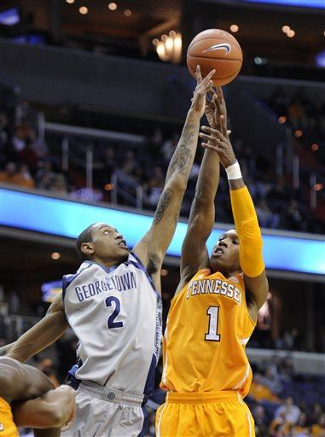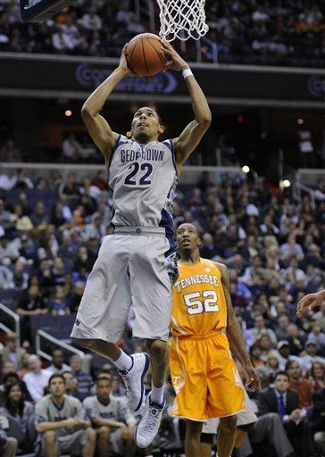Frank Erwin Center | Austin, TX | Tip: 7 P.M. | TV: Longhorn Network LRT Consecutive Game #230 The Texas Longhorns take a brief reprieve from their brutal December schedule, retuning home this evening to host Texas State. The Horns are in desperate need of a win, coming off of a demoralizing loss to Georgetown in New York and a late-game meltdown against UCLA in Houston. Fortunately, the Bobcats have historically been an agreeable non-con visitor, losing the last 23 times in their series with Texas. The Longhorns were headed in the right direction last Saturday, although the final four minutes of their loss to UCLA might have erased those memories from the minds of most Texas fans. Ball movement was crisp on the offensive end, players were moving consistently off the ball, and Cameron Ridley put in his a solid performance for the second consecutive game. Most importantly, the Longhorns did a fantastic job controlling the basketball for a majority of the game, although the turnover bug caught up with them in crunch time. Tonight, it’s imperative that Texas continue to build on the things that were done correctly against UCLA. If the Longhorns can once again control the basketball against a Texas State team that pushes the tempo and forces mistakes, they will perhaps start to believe that they can overcome those issues. If Ridley and Javan Felix can follow up their strong performances with another good outing tonight, their confidence will be higher heading into two very tough games against North Carolina and Michigan State. Conference play is just three weeks away, so Texas has very few opportunities left to reinforce good habits and change the psychology of a team that Sheldon McClellan said is made up of “guys [who] don’t believe we can win.” By the numbers As has been the case since Coach Doug Davalos arrived on campus in 2006, the Bobcats love to get out and run. In each of Davalos’ first five seasons, Texas State was one of the five fastest teams in D-I hoops. Even last year, the Bobcats still were the seventh-fastest team in the nation, squeezing more than 72 possessions out of every game. This year, they are averaging more than 75 possessions per game, the third-quickest tempo in the country. Historically, the Longhorns have had very little problem with the up-tempo approach of the Bobcats. In their six meetings with a Davalos-led Texas State squad, the Horns have averaged 79.5 possessions and have scored 1.153 points each time down the floor. As it has been all season, the primary area for concern for the Longhorns is in controlling the basketball. Even after posting a turnover mark of just 15.5% against UCLA last Saturday, Texas still has a 26.6% turnover percentage for the year, one of the 20 worst marks in D-I hoops. The Bobcats, meanwhile, force mistakes on more than 24% of their opponents’ possessions. This evening’s game will provide a very good test for the Texas ballhandlers, one which should show whether or not the team’s improvement in ball control was the start of a trend or just a statistical blip. On the other end of the court, Texas State has struggled to score consistently this season. According to Ken Pomeroy, their adjusted offensive efficiency is 0.955 points per possession, thanks in large part to an inability to reclaim missed shots. The Bobcats have grabbed just 28.9% of their offensive rebounding opportunities, one of the 100 worst marks in Division I. The Longhorns were killed on the defensive glass in those painful final minutes against UCLA, so this offers a good chance for Texas to improve in that department. With only one member of the core Bobcat rotation checking in over 6’7″, there’s no reason why the Horns shouldn’t dominate on the glass tonight. Meet the Bobcats Texas State brings back quite a bit of experience this year, as three of the Bobcat starters faced off against Texas at the Erwin Center last season. The team has six upperclassmen, including a pair of JUCO transfers that have cracked the starting rotation. Point guard Vonn Jones (No. 1) had a rough year shooting the ball as a junior, but has made good strides so far in his senior campaign. Jones is the team’s best three-point threat, leading the team in both attempts (33) and accuracy (45.5%). Coach Davalos also believes that Jones has improved his defense in the offseason, something that has helped him keep the starting job and average 24 minutes per game. Wesley Davis (No. 10) joins Jones in the backcourt, where he’s started every game as a sophomore. Davis was recruited to be a shooter for the Bobcats, but has taken only about 17% of the team’s looks when he’s been on the floor. Perhaps the most confounding thing about Davis is his career mark of 64.5% from the line. For someone who is supposed to be launching it regularly, that level of accuracy on the easiest of shots is incredibly troubling. JUCO transfers Joel Wright (No. 25) and Corey Stern (No. 5) have combined for 11 starts and more than 24 points per game. The addition of this pair of 6’7″ guys was supposed to be the solution to poor rebounding numbers from a year before, but results have been mixed so far. Wright has certainly done his part, posting an offensive rebounding percentage that ranks him as one of the Top 100 players nationally. Per game, his 6.2 rebounds are tops on the team, while Stern has managed just 4.4 per game. In the middle, senior Matt Staff (No. 21) is still the team’s only true big man, checking in at 6’10”. He leads the team in both minutes and points, scoring more than 16 in just over 27 minutes per game. If the Longhorns can get him in foul trouble, as they did to UCLA’s Travis Wear last Saturday, they will suddenly have quite the size advantage over the Bobcats. With Wright and Stern working their way into the starting five, junior Reid Koenen (No. 3) has shifted to a sixth-man role. The 6’7″ Wisconsin native is now back in his comfortable role of small forward, where he can match up better with quick opponents on the wings. Also coming off the bench is freshman Phil Hawkins (No. 0), who was expected to challenge Jones for the starting point guard spot this year. While Hawkins hasn’t made any starts yet, he’s still averaging nearly 18 minutes per game. Turnovers have been holding back his progress this year, as he’s coughed it up 17 times against just eight assists. Guards Darius Richardson (No. 13) and Ray Dorsey (No. 4) round out the core rotation for Texas State. Richardson is a strong 6’4″ guard who can play the two or the three and has seen the court for about 12 minutes per game. He was a regular starter at UT-Arlington before transferring to Texas State, but will have to wait another year before earning that honor for the Bobcats. Dorsey is a 6’3″ freshman who is playing around 10 minutes per game and has as many assists — seven — as buckets this year. Keys to the game 1) Control the basketball – As promised, this key to the game is keeping its standard spot in the game preview. The Longhorns did a much better job controlling the basketball for a majority of the game against UCLA, but coughed it up when it mattered most. While Texas State hasn’t been a particularly good team this season, they can force mistakes with their up-tempo approach. If Texas wants to avoid the unthinkable upset, they cannot waste possessions with turnovers. 2) Take advantage inside – The Bobcats are undersized and have not done a good job on the glass this season. The Longhorns, meanwhile, have provided some excellent post defense and did a great job scoring in the paint against UCLA. Texas needs to establish a post presence early in this one and work to control the glass, something that has often been a challenge this season. 3) Get Sheldon McClellan going early – Against UCLA, McClellan once again had a rough first half, not even cracking the scoring column for the first 17-plus minutes of the game. He played much more aggressively in the second half, putting the ball on the floor to create better looks rather than relying exclusively on jump shots. While the Horns need to get Ridley the ball early in this game, Sheldon also must be aggressive with the ball to avoid yet another slow start. |








